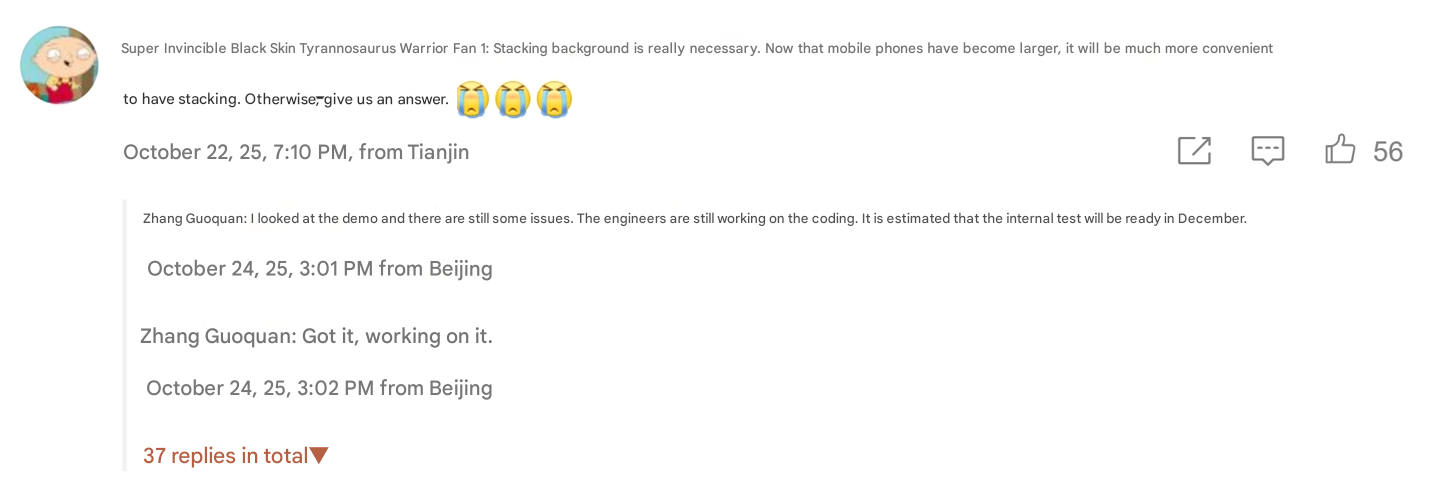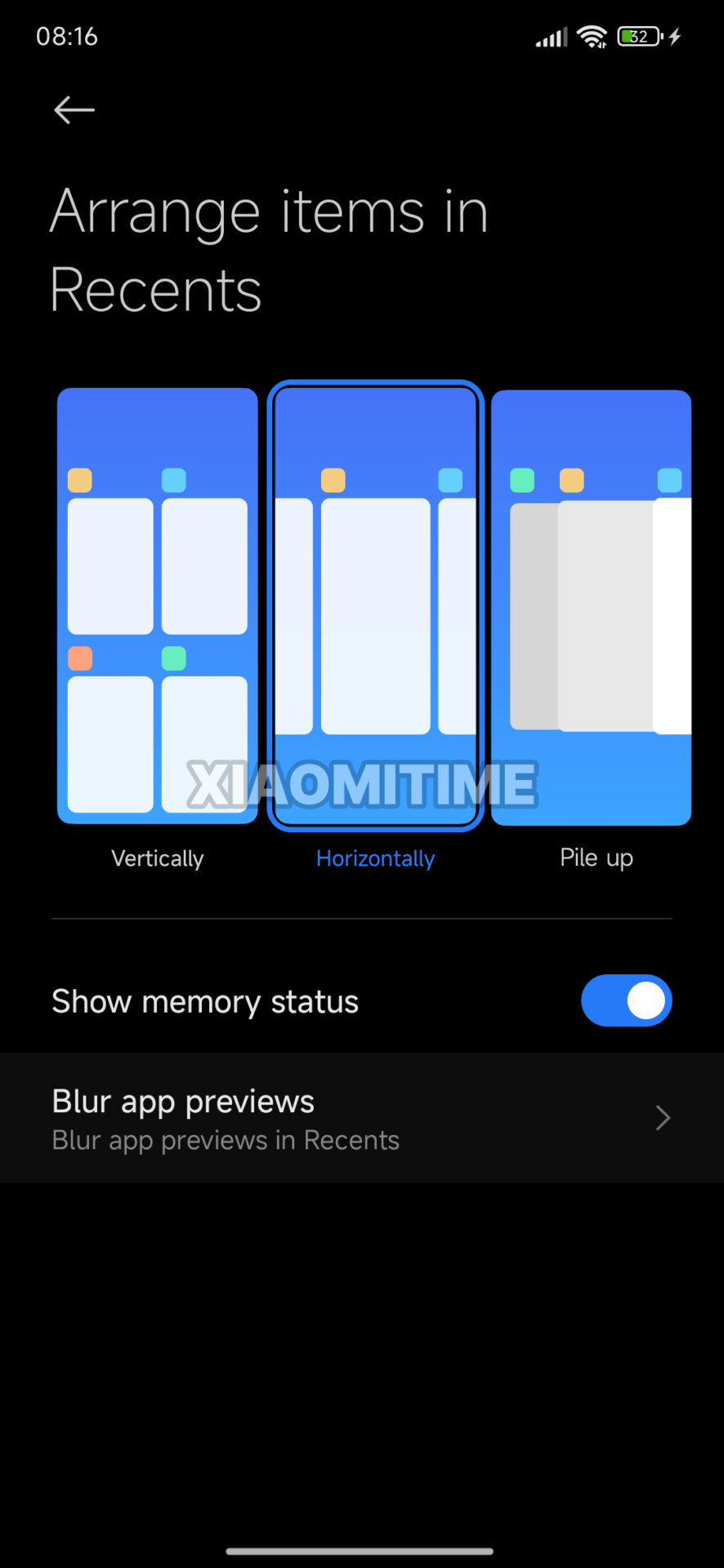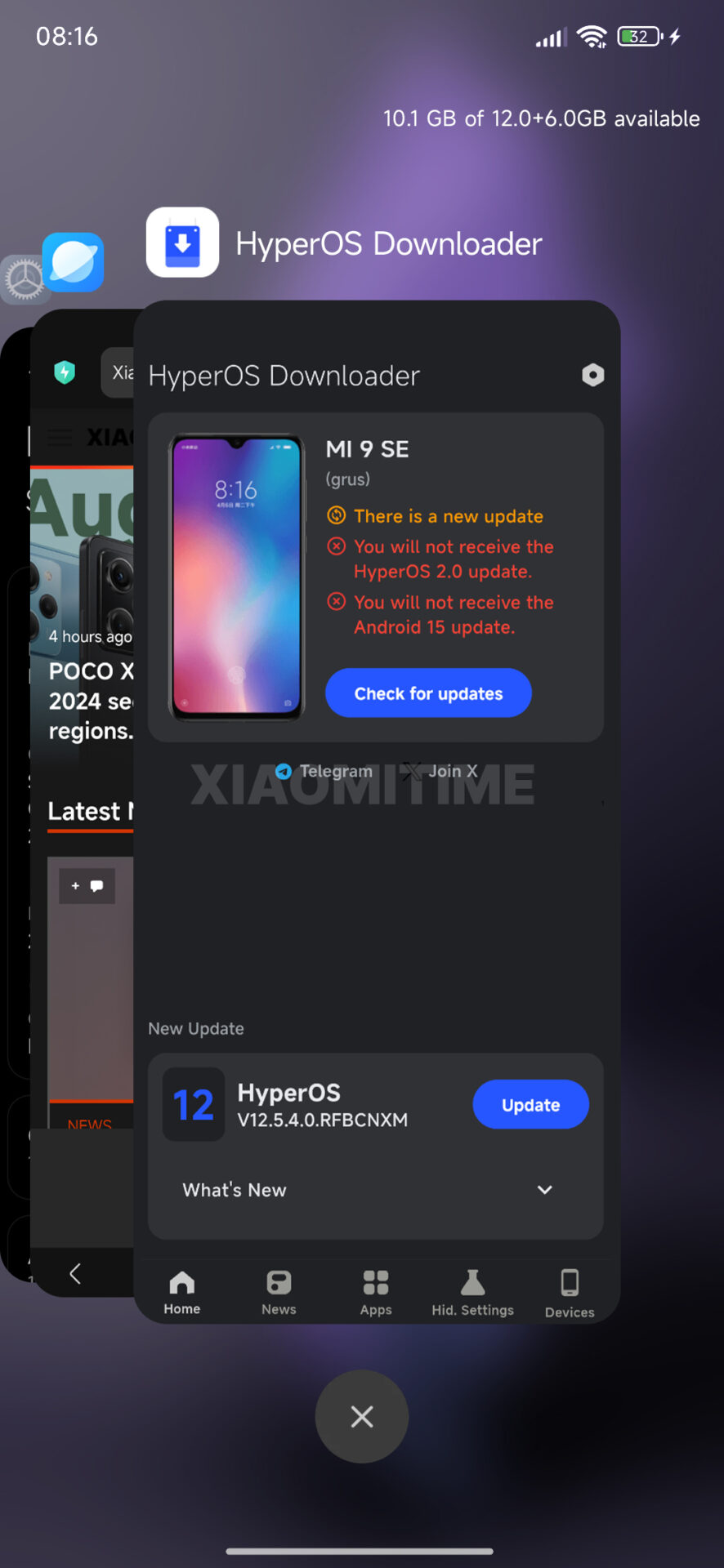Xiaomi’s Mobile Software Director, Zhang Guoquan, has confirmed that the company will begin internal testing of the stacked background interface in HyperOS this December. This upcoming addition will enhance multitasking on Xiaomi phones, offering a more intuitive and visually fluid background management experience. The feature was revealed through Zhang’s interaction with users on Weibo, showing Xiaomi’s continued commitment to improving real-world user experience through HyperOS, the company’s unified operating system.
Xiaomi’s Zhang Guoquan Confirms Development Progress
Responding in a Weibo exchange, a Xiaomi enthusiast requested the addition of a stacked background interface, especially with larger displays of current cellphones that require more fluid multitasking features. In response to the comment, Zhang Guoquan responded, “Received, working on it,” and further noted later that the feature is already at the demonstration phase but is still being optimized. Programmers are now completing the code, and internals testing is rumored to begin in December.
What is the Stacked Background Interface?
The stacked background interface allows users to view running applications as a deck of cards laid on top of one another, from largest to smallest in the order they are opened. Users can swipe left or right to switch between apps or swipe up to close them, similar to the multitasking interfaces before in webOS (2009) and subsequently in Apple’s iOS 9.
This structure offers an interactive and spatial way of managing applications instead of traditional grid-patterned task lists. It enables greater maximization of screen space, especially useful on large-screen devices such as the Xiaomi 15 Pro and Xiaomi Pad 7.
Historical Inspiration and Design Evolution
Stacked multitasking was conceived initially in webOS, released on phones such as the Palm Pre, which also popularized such features as wireless charging and gesture navigation — now standards on most modern smartphones. Later, Apple’s adoption of the interface in iOS 9 brought this type of managing multiple applications into the mainstream.
With HyperOS, Xiaomi seems to be reminding us of these old-school concepts but refreshing them with smooth animations, AI optimizations, and better scaling of performance.
Expected Integration in HyperOS
The stacked interface is expected to become part of HyperOS’s 2025 updates, potentially under the next feature build following HyperOS 3.1. Once public testing begins, Xiaomi users will likely experience more seamless multitasking, smoother animations, and better use of display real estate — aligning with Xiaomi’s broader mission to create a connected, intelligent user ecosystem through Xiaomi HyperConnect.
Source: IT Home


 Emir Bardakçı
Emir Bardakçı





Whoever made this Shitty post is a retarded Hyperos 3 haven’t even Released this Dumbass Idiot Posting this Vro
dude he’s talking about the china version right now not global
wasted HyperOs also xiaomi brand poor customisation features that is colorOs Best and Oraigin Os great
@Etotspia Imagine not knowing they already released HOS 3 on a bunch of models in China. It’s called a roadmap you dyslexic fucktard.
BFFR you guys say this every update
I always asked myself why I didn’t have it but the truth is that xiaomi used to advertise it as it is in their devices and yet it was not yet in any of the devices
So old stupid way is comming back… Why.. Atleast they are just adding an option (not removing old options).
Also hyperOS have had long lasting bugs with sitching apps.. I wish they would first fix stuff.
my phone problem not control conter new please update Redmi 14c my phone
my phone problem not control conter new please fix update Redmi 14c my phone
please my phone update no
please my phone update no 3.0.1